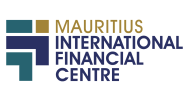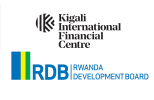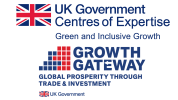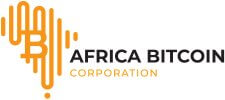How to streamline the due diligence process
In the world of business transactions, due diligence is a critical step. It’s a comprehensive appraisal undertaken before a deal is sealed.
However, the process can be complex and time-consuming. It involves a thorough examination of financial records, legal documents, and operational aspects.
This article aims to guide you on how to streamline the due diligence process. We’ll delve into the roles of due diligence groups and the increasing importance of IT due diligence.
Whether you’re a business professional, investor, or IT specialist, you’ll find actionable insights to make your due diligence more efficient and effective.
Understanding Due Diligence
Due diligence is a term often used in business transactions, particularly in mergers and acquisitions. It refers to the process of investigating and verifying the details of a potential investment or deal.
The main goal of due diligence is to identify any potential risks or liabilities. This process helps parties involved make informed decisions and negotiate better terms.
Due diligence is not a one-size-fits-all process. It varies depending on the nature of the deal, the size of the companies involved, and the industry in which they operate.
In essence, due diligence is a vital risk management tool. It protects businesses from making costly mistakes, ensuring that every decision is backed by thorough research and analysis.
The Role of Due Diligence Groups
Due diligence groups play a crucial role in coordinating the due diligence process. These groups are typically composed of experts from various fields, including finance, law, and IT.
Their primary responsibility is to conduct a thorough investigation of the target company. They examine financial records, legal documents, operational procedures, and IT systems.
By working as a team, due diligence groups can provide a comprehensive view of the target company. This holistic approach ensures that all potential risks and opportunities are identified, contributing to a more informed decision-making process.
Key Components of Due Diligence
Due diligence is a multifaceted process. It involves examining various aspects of the target company to gain a comprehensive understanding of its operations.
The first key component is financial due diligence. This involves a thorough review of the company’s financial statements, tax records, and other related documents. The goal is to assess the company’s financial health and identify any potential financial risks.
Next is legal due diligence. This involves reviewing contracts, compliance records, and other legal documents. The aim is to identify any legal risks or liabilities that could impact the deal.
Operational due diligence is another crucial component. This involves evaluating the company’s operational capabilities, infrastructure, and procedures. The goal is to assess the company’s ability to maintain its operations post-acquisition.
Lastly, IT due diligence is becoming increasingly important. This involves assessing the company’s IT systems, software licenses, data privacy measures, and IT governance. The aim is to identify any potential cybersecurity risks and ensure the company’s IT systems are robust and secure.
IT Due Diligence: A Closer Look
In today’s digital age, IT due diligence has become a critical part of the due diligence process. It involves a deep dive into the target company’s IT systems, infrastructure, and policies.
The main focus areas include software licenses, hardware condition, data privacy, and IT governance. The goal is to identify any potential cybersecurity risks, ensure compliance with data protection laws, and assess the overall health of the IT infrastructure.
By conducting thorough IT due diligence, companies can avoid costly IT issues post-acquisition, ensure business continuity, and protect against data breaches and other cybersecurity threats.
Preparing for Due Diligence
Preparation is key to a successful due diligence process. This involves gathering all necessary documents and information about the target company. These may include financial statements, contracts, employee records, and IT policies.
The preparation phase also involves reviewing these documents for any potential issues or red flags. This can help to identify any areas that may require further investigation during the due diligence process.
By being well-prepared, companies can ensure a smoother due diligence process, reduce the risk of unexpected surprises, and increase the chances of a successful transaction.
Creating a Tailored Due Diligence Checklist
A due diligence checklist is a critical tool in the due diligence process. It provides a structured framework for the review and helps ensure that no important aspect is overlooked.
However, it’s important to remember that each transaction is unique. Therefore, the checklist should be tailored to the specific needs and objectives of the deal.
Here are some key areas that a due diligence checklist might cover:
- Financial records and statements
- Legal contracts and compliance documents
- Operational processes and infrastructure
- IT systems and cybersecurity measures
- Employee and management information
- Market position and competitive landscape
- Intellectual property and innovation potential
- Cultural fit and values
- Regulatory and antitrust issues
- Potential operational improvements
- Hidden liabilities and contingent risks
- Quality of earnings and cash flow
- Exit planning for investors and business owners
- Trust and transparency in business transactions
By creating a tailored checklist, companies can ensure a more focused and efficient due diligence process.
Leveraging Technology: Virtual Data Rooms and Due Diligence Software
In today’s digital age, technology plays a crucial role in streamlining the due diligence process. One such technology is the virtual data room. This secure online platform allows for the safe storage and sharing of sensitive documents.
Another key technology is due diligence software. This tool can automate many aspects of the process, from document collection to data analysis. It can also provide real-time updates and insights, making the process more efficient and effective.
By leveraging these technologies, companies can significantly speed up the due diligence process, while also enhancing accuracy and security.
Efficient Information Gathering Techniques
Efficient information gathering is key to a streamlined due diligence process. One effective technique is conducting interviews with key stakeholders. This can provide valuable insights into the company’s operations, culture, and strategic direction.
Another technique is the use of questionnaires. These can be tailored to specific areas of interest, such as financial performance or legal compliance. They can also be used to gather data in a structured and consistent manner.
By combining these techniques with a thorough document review, companies can ensure they have a comprehensive understanding of the target entity. This can aid in making informed decisions and mitigating potential risks.
Synthesizing Findings into a Due Diligence Report
Once the information gathering phase is complete, the next step is to synthesize the findings. This involves analyzing the data and drawing conclusions. The goal is to create a coherent due diligence report that provides a clear picture of the target entity’s strengths, weaknesses, opportunities, and threats.
The report should be structured in a way that makes it easy to understand. It should highlight key findings and provide actionable insights. This can help decision-makers to make informed choices about the potential transaction.
Remember, the due diligence report is not just a summary of findings. It’s a tool that can influence the outcome of a deal. Therefore, it’s crucial to ensure it’s accurate, comprehensive, and well-structured.
Conclusion: The Impact of Streamlined Due Diligence
Streamlining the due diligence process can have a significant impact on the success of a business transaction. It can help to identify potential risks and opportunities early on, allowing for more informed decision-making.
Moreover, a well-structured due diligence process can save time and resources. It can reduce the likelihood of costly mistakes and oversights. This is particularly important in high-stakes transactions, where the margin for error is small.
In conclusion, due diligence is a critical component of any business transaction. By streamlining the process, businesses can ensure they are making the best possible decisions for their future.













































